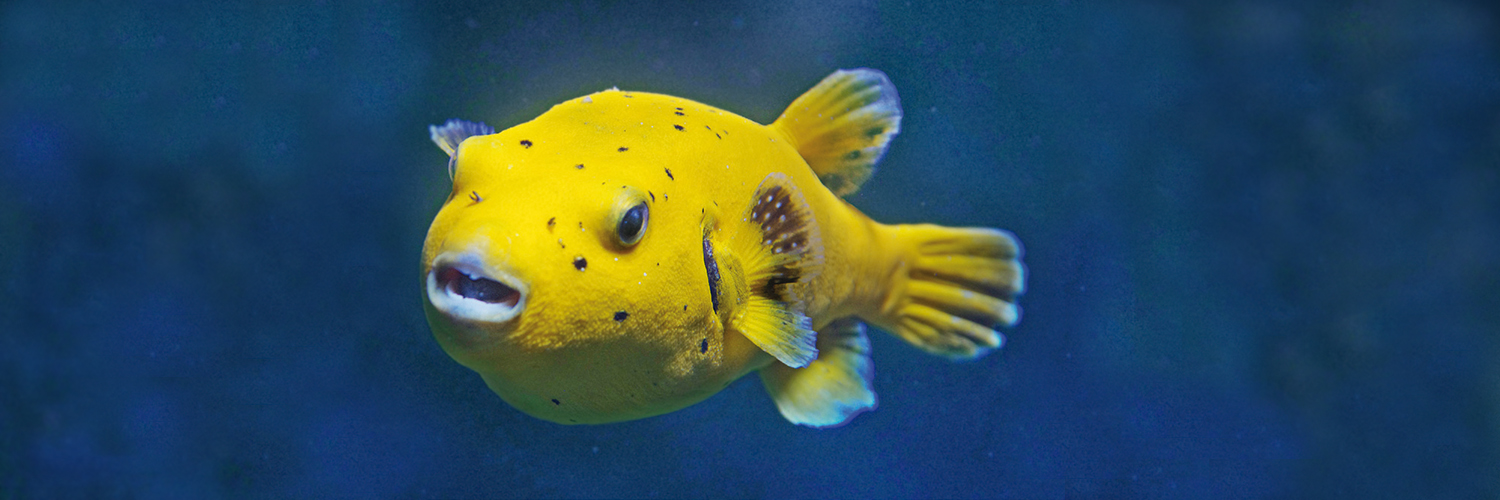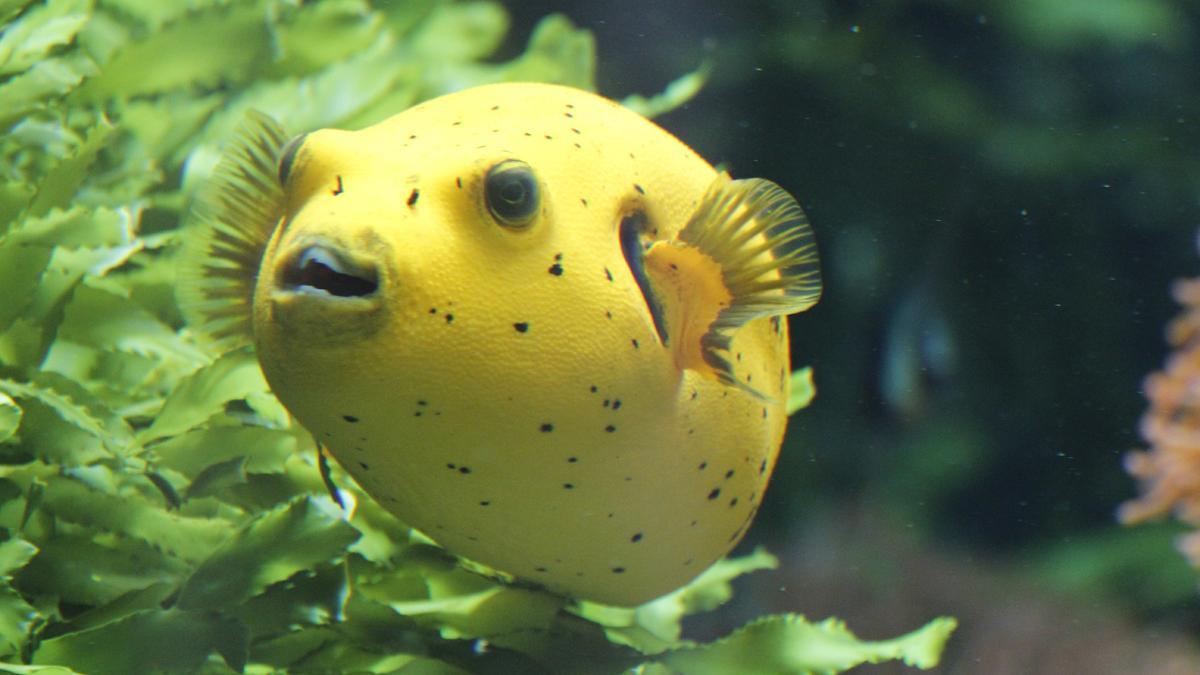
Lemon-coloured pufferfish
Arothron Meleagris Citrinellus
The pufferfish family consists of two subfamilies with a total of 26 genera and 190 valid species. The lemon-coloured pufferfish belongs to the arothron genus with 15 species. Its circulation area extends over the Indian Ocean and the Pacific, from the coast of Eastern and Southern Africa to Japan, Easter Island and Panama. They live in coral-rich, shallow areas above the 25-metre mark there.
What you should know about the lemon-coloured pufferfish
The guineafowl pufferfish is blackish in colour with many small white dots. A colourful variant can be seen in the yellow, lemon-coloured pufferfish, which is only slightly speckled, reaching a maximum length of 30 cm. A common feature shared by all pufferfish is the lack of pelvic fins.
Characteristics
- Herkunft
Indo-Pacific
- Habitat
Coral reefs from 3 to 25 m depth
- Diet
Crustaceans, molluscs, sponges and algae
- Status
least concern
- Size
max. 30 cm
- Weight
approx. 2kg
- Gestation period
unknown
- Achievable age
approx. 10 years
Threat Categories of IUCN


A ball can be difficult to devour
When at risk, the pufferfish live up to their name and pump up into a ball when an attacker strikes, acting as a deterrent – admittedly this seems more impressive when they do this as opposed to frightening for us humans. They turn into a ball by pumping water out of their oral cavity into a bag-like extension of their stomach using their strong muscle structure.
It is as poisonous as it is yellow
The nerve poison of the lemon-colored pufferfish contains tetrodotoxin and is one of the strongest known, non-protein poisons. Even a dose of only ten micrograms/kilogram of body weight is lethal to humans. The effect of the nerve agent is particularly treacherous: Victims are paralyzed, but remain with full consciousness until death by asphyxiation or cardiac arrest occurs.
Is it true, that ...?
... the poisonous pufferfish is eaten? Unfortunately yes. Its muscle meat is even seen as a specialty in Japan, this is known as 'Fugu'. However, many people have paid for it with their lives. After more than a 100 people were being poisoned each year, strict laws were introduced in 1958 to govern the sale of pufferfish. The number of deaths has since shrank to just a few people per year.

